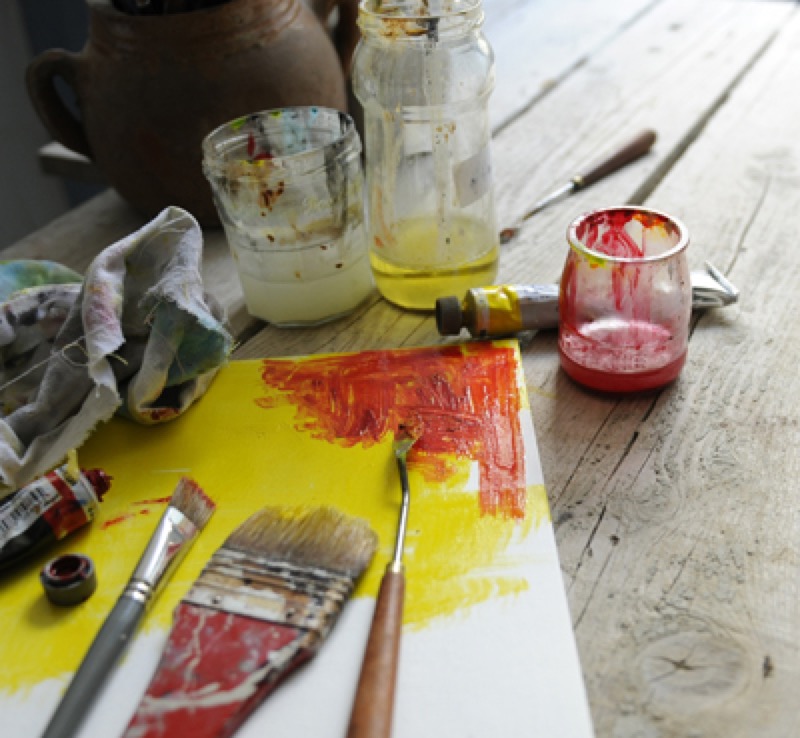A clear advantage of acrylic paint: you can use it on many media… that don't need priming.

1. Paper: an original medium
Select sturdy and absorbent, heavyweight paper (at least 300 g/m2) to paint with acrylics.
- Special acrylic paper comes in pads and as loose sheets: it is thick (400 g/m2) and its fine grain lends itself especially well to washes.
- Oil painting paper can also be used: it has a texture approaching linen canvas so it is perfect for impasto work.
- Watercolor paper has a unique texture: A torchon grain is preferable for playing off a raised texture, while a fine grain is used for an authentic watercolor effect.
Less expensive than most other media, this paper is ideal for novices seeking to experiment extensively for less money. This light, practical paper is also the favorite medium of artists on the move.

2. Other media
Canvas
- Ready-to-use canvases come in various formats and materials.
- A canvas in a roll means that you stretch it on a frame yourself. Advantage: you control your medium's dimensions.
What kind of material?
- Linen canvas: Fineness and damp-resistance… this is an excellent quality canvas, but costs more! You would be better off practicing on other media before trying it.
- Cotton canvas: while more affordable it is less sturdy than linen canvas and tends to loosen. So you need to be meticulous about stretching it on a frame!
- Flax canvas: its fibers are coarser than cotton, but also sturdier and more durable. The perfect medium for working with large impastos!
Cardboard
- Cardboard is a good choice for doing sketches or color studies.
- Canvas board is a less expensive alternative to canvas. This is a stiff cardboard panel with canvas glued onto it; it is perfect for small format artwork and for working outdoors.
Wood
Wood and plywood panels provide smooth surface that is pleasant to work on, but are also very absorbent (applying an acrylic gesso is highly recommended).
Practical advice
For a perfectly smooth, slightly absorbent surface, apply an acrylic gesso to your medium. This white pomade adheres to all porous surfaces and dries fast! That little extra: you can tint your gesso by mixing it with an acrylic paint in any color you wish.
Recommended product:
Acrylic
